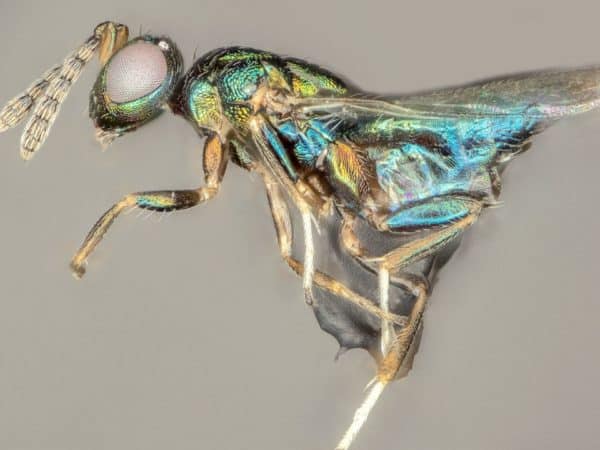“Crypt Keeper” wasp found on US soil

 Crypt Keeper wasp. It doesn’t sound good, does it?
Crypt Keeper wasp. It doesn’t sound good, does it?
Scientists from Rice University have just discovered a new species of wasp, named after the ancient Egyptian god of evil and found to infect another species of wasp by controlling its actions and then bursting through its host’s head at the opportune moment.
The grisly details are almost out of science fiction. Researchers have confirmed the new species Euderus set, found in the Southeastern United States and goes by the common name, the crypt-keeper wasp. Aptly named for its ghoulish behaviour, the crypt-keeper is actually a parasite which preys on another parasite, the crypt gall wasp.
After months of study, researchers found that the larvae of E. set feed, grow and pupate inside the body of the gall wasp, which itself is feeding off live oak trees by forming galls or swellings on the plant. The horror show begins when E. set gets the gall wasp to chew a hole through the swelling and push its head through, at which moment E. set comes bursting out through the gall wasp’s head, leaving bits of the poor bug scattered behind in its own grave (thus, the crypt analogy).
The research team has speculated that the cause of the display is that the smaller E. set (at full size its only measures between 1.2 and 2.3 mm) needs the gall wasp to do its dirty work for it before ungratefully killing its employee.
“So, it looks like the specific purpose of the manipulation is to help the crypt-keeper wasps emerge, because they are weaker excavators than their hosts,” says Kelly Weinersmith, parasitologist at Rice University in Houston, to Live Science. “They need the hosts to do that work for them, so they can get out.”
Brother of Osiris and Isis, the Egyptian god Set (or Seth) was said to be the god of war, chaos and natural storms, who legend has it trapped his brother Osiris in a crypt, killed him and scattered his body pieces throughout the world. Set was commemorated in the names of Egyptian rulers like Seti I, Sethnakhte and Seti II.
And while Set was often depicted as a red-haired monster like the griffin, the crypt-keeper wasp is said to be actually quite attractive under a microscope, with olive green, turquoise and iridescent blue hues to its shiny coat. The species has been identified all along the U.S. Gulf Coast from Texas to Florida.
With the onset of climate change, the warmer springs and autumns in various regions around the world are translating into booming populations of wasps in places like the United Kingdom and New Zealand, so says a new study in the Journal of Animal Ecology which looked at 39 years of data on wasp populations in the two countries to conclude that unlike some other species who are more prone to fungal infections with the onset of warmer winters, wasps are seemingly thriving.
In Canada, there are 200 known species of wasps, with a recent study concluding that the Ottawa region alone contains 158 different wasp species. Eschewing speculation on a political explanation behind the plentitude of wasps in the Nation’s Capital, researchers have chalked it up to the fact that the Ottawa valley is a transitional area between two types of forest, eastern deciduous and boreal.

